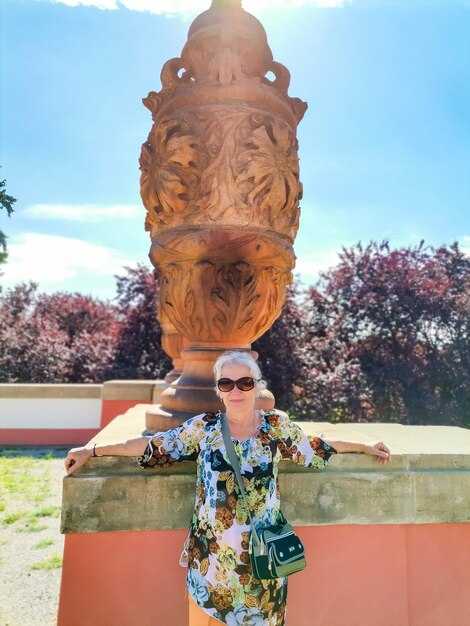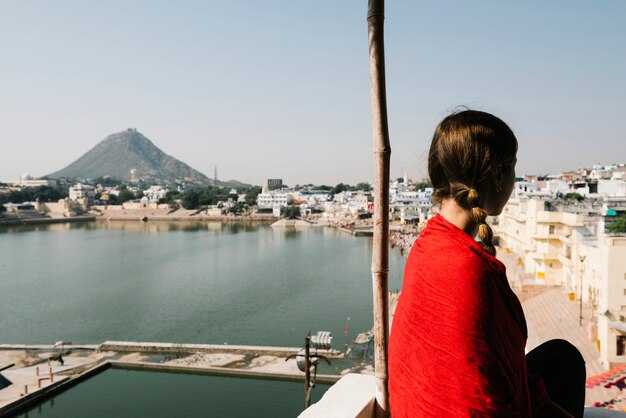Start with a private, full-day tour of Alfama and the Belém coast, grab a manteigaria pastel de nata in the morning, and ride a historic tram to get your bearings.
The gorgeous river views set the tone for a day that moves from Alfama’s narrow lanes to the modern riverfront. A ツアー through Baixa and Chiado helps you connect the dots, and a subsequent stop at a coast-facing lookout gives you a clear sense of scale and style.
In Belem, the Jerónimos Monastery and Belem Tower anchor the afternoon, with the coast providing dramatic backdrops. The area is popular, and its popularity means lines can be long, so a private guide can save you time and keep you on track.
To cover ground efficiently, combine walking with tram 28 for the hills, and reserve a private coach for longer hops between districts. Working stairs and cobbles demand sturdy shoes, so bring water and a hat for sunny days.
During the late afternoon, Time Out Market offers varied tasting stations, and some cafés list a small couvert per table. For a sweet finish, return to manteigaria for a fresh custard to share with them as you plan the next stop.
Compared with europe, Lisbon keeps a compact core where each building and tile adds texture. A balanced pace lets you enjoy a full-day window of neighborhoods, views, and flavors by the coast and beyond.
Five Alfama Must-Do Experiences and How to Reach Them Quickly
Experience 1: Start with a sunset at Miradouro de Santa Luzia, here you’ll see intricately tiled houses along the hill and the port gleaming below as boats drift by.
Experience 2: a traditional casa de fado in Alfama, offering intimate songs and a side of small plates. Book in advance at Clube de Fado or Parreirinha de Alfama; from Baixa-Chiado, hop on the electric tram 28 or walk a steady 15 minutes to reach the venue. Some venues arrange toursintra guides for a particularly warm evening, and guided listening enhances the mood.
Experience 3: Castelo de São Jorge, a perched fortress with city-wide views. Reach it quickly by metro to Baixa-Chiado, then a 15–20 minute uphill stroll through Alfama’s lanes; along the way you’ll pass viewpoints and snack stalls.
Experience 4: the electric tram 28 ride through Alfama, finishing near Graça or Martim Moniz, a scenic ascent that lets you skip long climbs. Board near Martim Moniz for speed, hold a window seat, and hop off at Miradouro de Santa Luzia or at the stop closest to your next stop.
Experience 5: a small wines-and-tapas crawl along Alfama’s side streets. Start at a local wine bar, sample two wines (a white and a red) and pair with cod, olives, or peppers; ask the staff for a practical pairing name and where to sit. In Alfama you’ll find a flat of classic labels, some new blends, and an inviting indoor/outdoor sitting area. Guaranteed to spark conversation and a sense of place. Note: some visitors mention marijuana in casual chatter; keep to public spaces and respect local rules.
Five Baixa-Chiado Highlights and Best Ways to Move Between Them
Begin at Praça do Comércio for an epic first impression–the Tagus port glitters to the south, the broad square invites you to map out the next steps, and you’ll know you’re in a walkable city from the start.
Highlight 1: Praça do Comércio. This vast riverfront square rose after the earthquake destroyed much of the old city and became a busy trade hub. Visitors stand beneath the grand arcades, sip coffee at outdoor tables, and watch ferries drift by toward the port. If arriving from the train or metro, this is the natural starting point for your Baixa-Chiado day.
Highlight 2: Arco da Rua Augusta. Step through the triumphal arch into Baixa’s tidy grid, then climb the terrace for top-down views of the river and rooftops. Food stalls and pastry shops line Rua Augusta, so grab a quick bite before you press on–the scent alone helps you pace your day.
Highlight 3: Elevador de Santa Justa. The iron lift connects Baixa to the Chiado plateau and delivers incredible city panoramas from the viewing deck. A quick ride saves time on busy days, and you’ll destroy the fatigue with a fresh breeze and a memorable photo. Tickets accept cash or card, so you have flexible options depending on your plan.
Highlight 4: Carmo Convent ruins. Destroyed in the 1755 quake, the skeletal arches stand as a powerful story of resilience. The adjoining Carmo Archaeological Museum adds context, and the nearby campo-like square offers a quiet pause amid the buzz, perfect for day planners who want a calmer pocket between sights.
Highlight 5: Livraria Bertrand. On Rua Garrett, this is the world’s oldest operating bookstore, filled with items that tell Lisbon’s story. Wander the shelves, pick up a post card, or a small gift; visitors often linger here, highly enjoying the calm after busy streets and the chance to trade stories with locals.
Moving Between Them

Keep things practical: most legs between highlights are short and flat, ideal for exploring on foot for a penny-saving and immersive experience. If you’re arriving from outside Baixa-Chiado, the metro’s Baixa-Chiado station (on the Green and Blue lines) drops you close to Praça do Comércio and Arco da Rua Augusta, letting you skip longer climbs.
From Praça do Comércio to Arco da Rua Augusta, stay along the riverfront and keep to the pedestrian lanes; from the arch to Elevador de Santa Justa, walk up Baixa’s core streets or hop a scenic tram 28 if crowds look high–heck, the old route through the area is beloved by visitors and locals alike.
To Carmo Convent, head into Chiado via the narrow lanes; the route passes cafés and small shops, a perfect chance to refuel and people-watch. If you prefer a quick transition, a short tram ride or a taxi can save time on arriving days when you’re pressed for time.
From Carmo Convent to Livraria Bertrand, follow Rua Garrett’s classic lanes into Chiado’s literary heart. This stretch offers a chance to pause for a pasty or coffee and to pick up a few quick items for a souvenir story to post back home. If you’re planning a month-long itinerary, consider splitting these segments across two days and leaving room for field-side Campo corners or a sunset stroll along the river–you’ll feel the city’s incredible rhythm shaping each afternoon. Arriving by metro makes the whole loop smoother, and with a little planning you’ll avoid long lines and still cover the five highlights–visitors have stood here many times and left inspired by the port, the old town, and the enduring energy of these areas.
Final note: thanks for reading this helpful guide. With thoughtful pacing, you’ll explore, have fun, and end your day with a final memory of Lisbon’s epic story by the port, knowing you’ve seen five essential Baixa-Chiado highlights and mastered the best ways to move between them.
Five Belém Riverfront Gems and Practical Getting-There Tips
Honestly, start your Belém day with a sunset stroll along the Docas de Belém and a plate of octopus at a riverside cafe. The river raged softly against the wall as the sun sank, creating ideal light for people-watching from a bench near the square. From there, Padrão dos Descobrimentos rises on the horizon, inviting you to move down the quay and connect history with today and tastes. Many visitors took photos here, while locals explain the stories behind the monuments in a kind, welcoming way.
1) Padrão dos Descobrimentos: ascend to the viewing platform for sweeping river views down to the Praça do Império and the Tagus beyond; a moment of nacional pride.
2) Torre de Belém: walk the promenade down to the water, study the fortress silhouette, and capture a reflection shot as boats glide by.
3) MAAT: the wave-form building attracts a steady stream of visitors; a reviewer notes how the light shifts as day progresses, and you connect to the riverfront by crossing the square toward the comércio side.
4) Docas de Belém: the dockside stretch is hopping on weekends; many cafés spill onto the quay, offering octopus tapas and coffee while working crews move between berths.
5) Jardim do Império / Jardim de Belém: unwind in the green square facing the Tagus, where shaded benches and azulejo walls frame distant views of the neighborhood and the water; your foot will thank you after a short rest.
Getting there: today you have quick options from central Lisbon. From Baixa-Chiado, tram 15E to Belém runs about 40 minutes with several river views. From Cais do Sodré, take the Cascais Line train to Belém (20–25 minutes). Use a Viva Viagem card to tap in and out on trains and trams. If you drive, park near the national park and walk down; on weekends the streets fill up, so foot travel is often faster. Along the river, homes with tiled façades line the slope, adding a lived-in feel to the neighborhood. For a compact visit, plan a 2–3 hour loop that hits Monument, Torre, MAAT, and the docks, finishing with a Pastéis de Belém stop. Recommendations: go early, wear comfortable shoes, and keep a light bag for photo gear. Couldnt miss this blend of history, design, and seafood; honestly, it proves one of Lisbon’s best riverfront experiences today. If you crave evening culture, look for a short fado set in a nearby neighborhood to cap the day.
Five Panoramic Viewpoints and Best Access Routes
Begin at Miradouro de São Pedro de Alcântara for a straight start to Lisbon’s skyline, then loop through five spots that pair iconic views with direct access routes.
-
Miradouro de São Pedro de Alcântara (Chiado) – Broadest city panorama with the river, 25 de Abril Bridge, and the pastel façades of Bairro Alto nearby. The view is a fact: you’ll see the skyline unfold over centuries of urban style, with the UNESCO core feeling easy to sense. This spot is known for a hidden edge where you can pause away from the crowds while you monitor the light through the stone balustrade.
- Route: from Baixa-Chiado, ride the Elevador de Santa Justa to Carmo and walk 5–10 minutes uphill through Rua do Carmo to the terrace. As an alternative, a 15–20 minute walk climbs from Restauradores Square along Rua da Misericórdia to the main overlook.
- Tip: youd appreciate a quieter angle if you turn to the far side; past March light, the pastel colors pop and the view feels newly done each time.
-
Miradouro da Senhora do Monte (Graça) – A favorite with a 360° sweep across the castle, Alfama rooftops, and the river. It’s a straight shot to the skyline, boasting cultural ambience and nearby cafés for a quick recharge. You can combine this with other nearby activities and feel the local rhythm as events spill into the lanes.
- Route: from Graça’s hillside streets, follow Calçada da Graça uphill for about 10–15 minutes; or hop a bus (28E or 736) and walk a short stair path to the terrace.
- Available options: a couple of local eateries offer quick pastéis and small dishes before or after the climb.
-
サンタ・ルチア展望台(アルファマ) – タイル張りのファサードと澄んだ川を背景にしたクラシックな都市の絵葉書。川を行き交う交通を眺めながら、穏やかな時間を過ごせます。近くの路地を文化散策するのもおすすめです。人混みを離れて静かな時間を過ごしたいなら、隠れた場所を見つけることができます。
- ルート:アルファマのルア・ダ・ミゼリコルディアから近づき、サンタ・ルジア教会の裏のなだらかな階段を上る。または、ポルタス・ド・ソルからサンタ・ルジアに向かって、より長く、景色の良いアプローチを続ける。
- ヒント:近くの通りを少し散歩してコーヒーを飲んでから、次の展望台に向かうと良いでしょう。
-
Castelo de São Jorge (キャッスル テラス) – 市壁を見下ろすこの展望台は、赤い屋根とその先の川を額縁に入れたように捉えます。光が柔らかくなり、石が輝く夕暮れ時の登山に最適です。 climbは安定しており、ルートはアルファマの歴史的な中心部と直接つながっています。
- ルート:アルファマ地区から出発。ルア・ド・カステロ経由またはメインのエントリーゲートから上り坂。バイシャから徒歩で15〜20分。途中で都会の雰囲気を楽しみながら、より長い散歩を好む場合はこちら。
- ヒント:このエリアには文化的な場所があり、時折イベントが開催され、楽しんでいる景色に趣を添えています。
-
グラサ展望台(ポルタス・ド・ソル地区) – 幅広い川のフレームと、触れられるほど近く感じるスカイラインが特徴の、夕日の名所。コンパクトで親しみやすい登山道で、近くのテラスでは、街の最後の光が移り変わるのを眺めながらくつろぐことができます。
- ルート:Rua da Senhora do Monteを下ってLargo do Monteに向かい、Graçaに向かって登ります。トラム/トロリーの停留所からは、静かな小道を5〜10分歩きます。
- タイミング:良い場所を確保するために、日没の約1時間前に到着してください。今日の混雑は空が暗くなるにつれて薄れ、素晴らしい写真撮影や会話のためのスペースが生まれます。
補足:ペースや天候に合わせて、いずれのルートもオプションとしてご利用ください。地元の雰囲気を味わいたい場合は、近くの文化スポットや軽食が楽しめる小さなカフェといくつかの展望スポットを組み合わせてみてください。これらのルートは、これらの道を地図に示した地元のガイドや写真家に敬意を表しており、この地域全体がユネスコの世界遺産に登録されており、歴史的にも非常に重要な場所です。また、周辺ではイベントやアクティビティも開催されています。このプランでは、リスボンのスカイラインを最も混雑した場所から離れて包括的に見ることができ、無理なく観光できます。アクセスしやすく、非常にやりがいのある、さまざまな視点から街を見ることができるでしょう。人通りの少ない場所から、より開けたテラスまで、このルート沿いで行うことはすべて、その場所の感覚を高め、街を最も象徴的で文化的なスタイルで捉えられたと感じるはずです。
リスボン発、電車で行く5つの日帰り旅行:チケットと時刻表
まずはシントラから。ロシオ駅から直通列車に乗り、Viva Viagemカードで往復切符を安く購入しましょう。列車は早朝から深夜までおよそ15~20分間隔で運行しており、丘の上にそびえ立つペーナ宮殿、ムーアの城、キンタ・ダ・レガレイラを思い出に残る一日で見て回るのに十分な時間があります。歴史的中心部の周辺の通りには小さな博物館があり、古い貴族に関する短い物語が訪問に彩りを添えます。観光の後は、町で手軽な食事を済ませ、リスボンに戻って川沿いを夕方に散歩しましょう。時刻やプラットフォームの変更については、CP.ptで最新の情報を確認してください。スケジュールは季節によって変更されることがあります。
カスカイスへは、カイス・ド・ソドラから電車で行きます。所要時間は約40分です。Viva Viagemカードを使えば、往復の切符も安く手に入ります。朝の出発は午前6時40分頃から始まり、午後の遅い時間まで電車が運行しています。魅力的な港と石畳の小道では、行き交う人々を眺めるのも楽しいですし、長い防波堤からは大西洋の美しい景色を眺めることができます。旧市街は石造りの建物のファサードや小さなカフェの上に位置しており、水辺での食事を楽しむことができます。夕方にはリスボンに戻り、ギターの流しを聞きながら、思い出深い一日を締めくくるのも良いでしょう。
セトゥーバルとアラビダ海岸は、もう一つの選択肢を提供します。リスボン・オリエンテまたはカイス・ド・ソドレからセトゥーバル行きの電車に乗りましょう。所要時間は50〜60分程度で、往復料金も安価です。セトゥーバルからは、バスに乗ってアラビダのポルトーニョまで行くと、緑豊かな丘、青い海、曲がりくねった海岸の景色が楽しめます。市立市場では、新鮮なシーフードや地元のチーズなどを販売しており、河口沿いを散歩すると、メランコリックで静かな風景が広がります。川沿いの食事は、シンプルなタスカの軽食からボリュームのある料理まで、リーズナブルな価格で楽しめます。自然を満喫したいなら、サド川の河口からイルカウォッチングのボートが出ており、家に帰ってからも喜んで話せるような思い出を持ち帰ることができるでしょう。
エヴォラは少し長めの旅の報酬を与えてくれます。リスボン・オリエンテ駅からIntercidadesに乗り、所要時間は約1時間30分から2時間です。片道チケットは、プロモーションや座席によって15ユーロから25ユーロの範囲です。ディアナ神殿、ローマ水道、大聖堂、人骨堂を見学するには5〜6時間を見込んでください。これらはすべて、ほとんど時代を感じさせない石畳の通りにあります。プラサ・ド・ジラルド近くにはコンパクトな博物館があり、その日の物語に親密な一章を加えてくれます。また、財布に優しい食事のオプションも見つかります。夕方には、ストリートミュージシャン(ギター奏者の場合もあります)が広場を巡回し、地元の雰囲気を満喫し、リフレッシュしてリスボンのナイトライフに戻ることができます。
コインブラは文化的な鼓動でループを締めくくります。リスボン・オリエンテからコインブラまでCPインターシティに乗り、約2時間の旅です。チケットは通常、クラスと空席状況に応じて20〜30ユーロの範囲です。大学の歴史的建造物、ジョアニナ図書館、モンドゴ川を見下ろす旧市街を訪れるには4〜5時間を見積もりましょう。この街は歴史と学生のエネルギーに満ち溢れており、狭い路地、川沿いのカフェ、活気のある夜が楽しめます。川岸に立ち寄れば、通りを歩くギタリストの演奏を聴きながら、夜に照らされた石造りのファサードを眺めながら、安価な食事を楽しむことができます。たくさんの感動と、ポルトガル中部の新しいお気に入りの場所を持ってリスボンに戻りましょう。



コメント